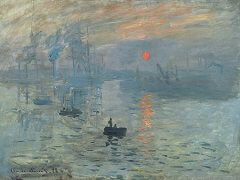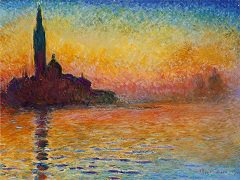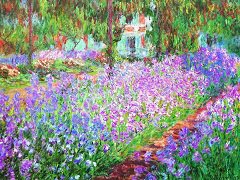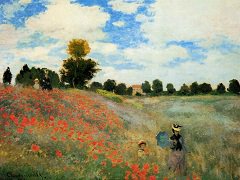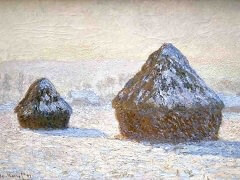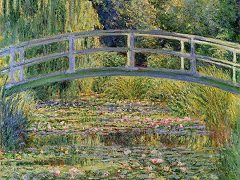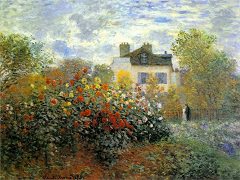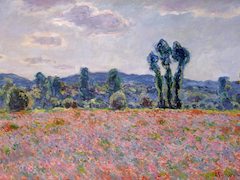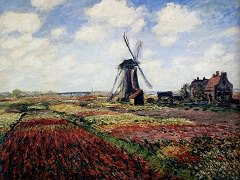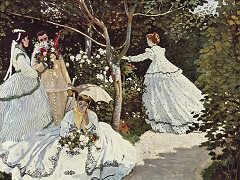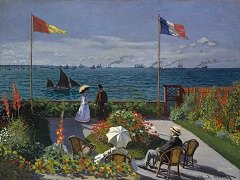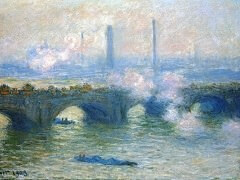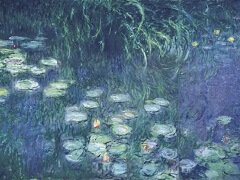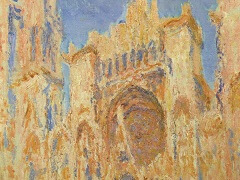Cliff Walk at Pourville, 1882 by Claude Monet
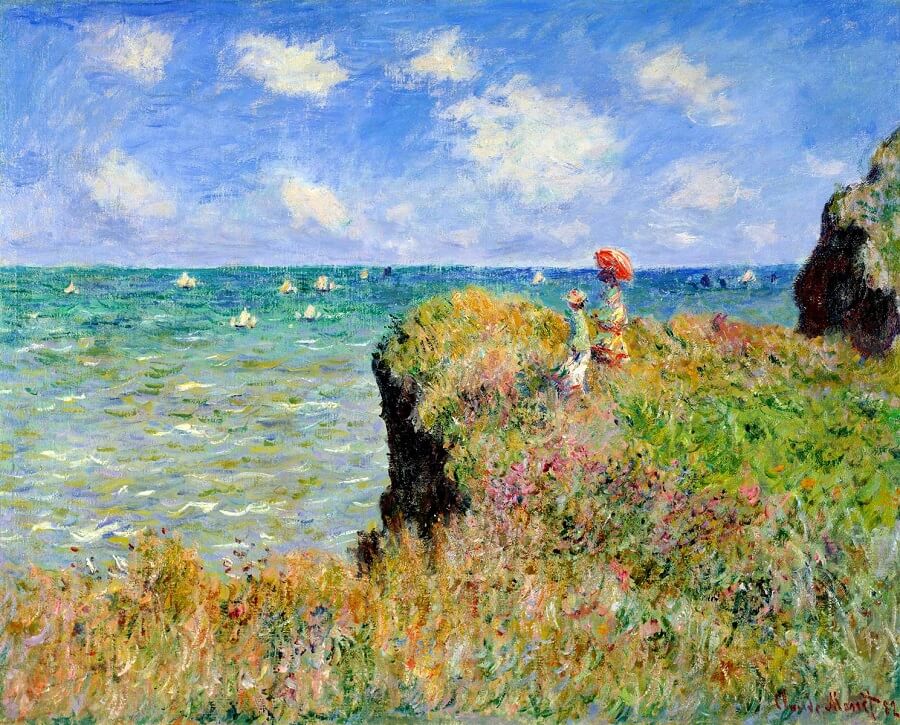
Monet completed Walk on the Cliff at Pourville in 1882 where he visited Normandy in order to find some escape from personal and professional pressures. It was three years since the death of Camille and he had a new arrangement with Alice Hoschede whom he would later marry following her husband's death in 1892, At this time, once again, Monet was plagued by financial worries. An economic recession in France had greatly affected the sales of his works and he was less than keen on the forthcoming Impressionist exhibition due to differences within the group. He settled in the fishing village of Pourville for a time and became increasingly encouraged by his new surroundings. Alice and her children joined him during the summer. It is thought that the two young women depicted are Marthe and Blanche, two of Alice's daughters, while other commentators suggest the woman is Alice herself accompanied by one of her children.
In this work, Monet addressed the problem of inserting figures into a landscape without disrupting the unity of its painterly surface. He integrated these elements with one another through texture and color. The grass - composed of short, brisk, curved brushstrokes - appears to quiver in the breeze, and subtly modified versions of the same strokes and hues suggest the women's wind-whipped dresses and shawls and the undulation of the sea. X-radiographs show that Monet reduced the rocky outcropping at the far right to balance the proportions of sea and sky.

